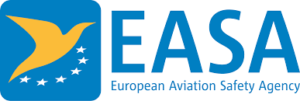European drone regulations published a few months ago reflect a risk-based approach: last week, a panel of experts hosted by Commercial UAV News met to discuss how those regulations will impact the drone industry.
European Drone Regulations – Expert Perspectives from Across the Pond
By: Dawn M.K. Zoldi, Guest Contributor
On Thursday, April 1, 2021, Commercial UAV (CUAV) News hosted a webinar, How Will European Drone Regulation Impact UTM, U-Space and Enterprise Fleet Management? The all-star cast included: Eszter Kovacs (CEO Manageld & DroneTalks), Christian Schliefer-Heingartner (Secretary General EUROCAE, a leader in standards development), Mariya Tarabanovska (Co-Founder Flight Crowd) and Stewart Marsh (Head of Aerospace, Cambridge Consultants). Under the guidance of CUAV’s Danielle Gagne, the group provided an informative and diverse assessment of drone regulations in Europe.
Drone Regulation and U Space
In case you have not been watching what is happening across the pond, the European Union Aviation Safety Agency (EASA), the U.S. Federal Aviation Administration’s (FAA) equivalent, has been busy. About 4 days after the FAA published advanced copies of the Remote Identification (RID) and Operations Over People rules, EASA pushed out uniform drone regulations applicable to the European Union (EU), Norway, Iceland, Liechtenstein and the United Kingdom and effective December 31, 2020. These regulations codify a risk-based approach to both recreational and commercial drone operations in three categories:
- Open – lowest risk flights; has three subcategories (A1 – A3) requires no pre-authorization
- Specific – risker operations; requires operational authorization and a pre-flight safety risk assessment
- Certified – highest risk; requires drone operator and aircraft certification and remote pilot (RP) licensing
The regulation requires drone operator/owner registration with the National Aviation Authority (NAA) of one’s EU country of residence unless the drone weighs less than 250g and is either a toy or has no camera or other sensor that can detect personal data. Additionally, drones with airworthiness certificates need to be registered if conducting specific or certified operations. The regulation also requires RP training for these higher risk operations, insurance and appropriate NAA flight authorization for the relevant geographical zone. All of this is additional to CE (“Conformité Européenne”) marking requirements for small drones up to 25kg (a number between 0 and 4, that specifies the class of the drone as C0, C1, C2, C3 and C4) and a RID requirement (see Regulation (EU) 2019/947; see also previous DroneLife coverage of Swiss implementation of RID).
In January 2021, EASA updated the regulation with clarifications on operations over people in the specific category, ensuring interoperability for national registrations and by introducing a new predefined risk assessment. EASA has rolled all of these requirements into a handy one-stop-shop publication.
U-Space is essentially the unmanned traffic management (UTM) system that fits into the EU regulatory scheme. EASA Opinion 1/2020, published in March 2020, established a high-level risk and performance-based regulatory framework for UTM. Similar to the FAA’s Notice of Public Rulemaking on RID which contained a network-centric solution and an unmanned aircraft service supplier (USS) concept, the U-Space regulation requires third-party U-space service providers. These will provide four things: flight authorizations for controlled and uncontrolled airspace; geo-awareness information about UAS geographic zones; network identification to track drones through both network and broadcast beamed out to other providers and operators (additional to RID); and traffic information. According to the regulation, optional U-space services could include: tracking services through real-time and historical UAS telemetry data; weather information and conformance monitoring for flight path compliance or deviations and appropriate alerts. U-Space will be effective in 2023. For a the 5 biggest takeaways about U-Space see this DroneTalks webinar.
Standards Compliment Regulations
Christian Schliefer-Heingartner of EUROCAE focused on the fact that his organization is creating standards in parallel to EASA regulations and that the move to performance-based regulations based on risk allows for additional innovation and flexibility. However, this same flexibility creates additional demand for uniform standards to support the regulatory framework. EUROCAE, a membership-based non-profit organization, and the European leader in the development of worldwide recognised industry standards for aviation, continues to contribute to this standards developments process. EUROCAE is moving in tandem with, and sometimes ahead of the regulators, developing acceptable means of compliance (MOC) to enable drone operations. EUROCAE’s European Unmanned Systems Standards Coordination Group has created three important standards that will key to UTM and U-Space services implementation: EUROCAE Document (ED) 269, Minimum Operational Performance Standard for UAS Geo-Fencing; ED 270, Minimum Operational Performance Specification for UAS Geo-Caging and ED 282, Minimum Operational Performance Standard for UAS E-Identification.
Per Schliefer-Heingartner, “If you comply with that standard, you know that the certification authority will grant you an operational certificate.” Given this, he referred to the current status as “the industrialization phase” of the process, where industry can now develop, produce and certify their products.
Technology Enables UTM
Stewart Marsh opined that innovation must play a part in UTM implementation because “It’s all about risk mitigation.” His company has assisted with three critical technological enablers: sensors, communication and navigation. On the sensor side, detect-and-avoid (DAA) can help mitigate risk for advanced operations such as beyond visual line of sight. The challenge is to avoid sacrificing performance for low size weight and power (SWaP). Marsh discussed how his group has borrowed ideas and tech from other industries like the autonomous automotive sector, to enable low cost/ high performance DAA by using low cost cameras, cheap optics with LiDAR and other sensors which they combine with artificial intelligence (AI). For communications, Cambridge Consultants has increased the availability, integrity and security of comms by using full spectrum solutions including: satellite communications, enhanced 4G networks and 5G solutions. For reliable location required for navigation they have combined AI with GPS, plus cellular and WiFI networks as GPS backups. For Marsh, technology is the key to regulations and has to precede and inform them.
Community Acceptance Can Propel or Stymie the Industry
According to Flight Crowd’s co-founder Mariya Tarabanovska, regulations will continue to evolve but in the end, the public will base their opinions on what they see or, perhaps more importantly, what they don’t see. Often regulations and standards are not transparent to the public (author’s note – EUROCAE standards are only available for free to its members) and they have no knowledge of them. While regulations may enable operations, public pressure can stop them. For example, drone noise can create public resistance and block progress. Responsible policy making and operations, according to Tarabanovska, must include concern about the environment, focus on how drone technology can benefit society as a whole and be inclusive of public voices. She recommended inviting the public, not just industry, to policy-making roundtables.
Eszter Kovacs, CEO Manageld & DroneTalks, wholeheartedly agreed. She mentioned the disconnect between industry and public perception about the social acceptance of drones. When she asks industry how the public perceives drones, they believe the public has a positive view. They point to recent COVID-19 applications, such as medicine delivery, as contributing to positive perception. When she talks to members of the public, however, they want to know why a drone is flying near them. This gap must be closed.
Regulations and Standards Require Implementation
Kovacs also highlighted the implementation gap. She lauded the fact that the U-Space regulation has been published and now companies can be prepared to move forward. The startups that she advises, which rely heavily on investments which create pressure to deliver solutions and create revenue, want the government to take the next steps and approve more advanced projects, open up airspace capabilities and not keep them in a proverbial air box. , according to Kovacs. Regulation is not enough without implementation
One World, Same Issue
Regulations continue to evolve. Yet it seems that Europe faces the same challenges as the U.S. when it comes to fully integrating drones into complex airspace: tech, implementation and public acceptance. We are all in this together. Learning from each other, working toward viable solutions and providing education more broadly will make the drone industry truly soar!
 Dawn M.K. Zoldi (Colonel, USAF, Retired) is a licensed attorney with 28 years of combined active duty military and federal civil service to the Department of the Air Force. She is an internationally recognized expert on unmanned aircraft system law and policy, the Law-Tech Connect™ columnist for Inside Unmanned Systems magazine, a recipient of the Woman to Watch in UAS (Leadership) Award 2019, and the CEO of P3 Tech Consulting LLC. For more information, visit her website at: https://www.p3techconsulting.com.
Dawn M.K. Zoldi (Colonel, USAF, Retired) is a licensed attorney with 28 years of combined active duty military and federal civil service to the Department of the Air Force. She is an internationally recognized expert on unmanned aircraft system law and policy, the Law-Tech Connect™ columnist for Inside Unmanned Systems magazine, a recipient of the Woman to Watch in UAS (Leadership) Award 2019, and the CEO of P3 Tech Consulting LLC. For more information, visit her website at: https://www.p3techconsulting.com.
Miriam McNabb is the Editor-in-Chief of DRONELIFE and CEO of JobForDrones, a professional drone services marketplace, and a fascinated observer of the emerging drone industry and the regulatory environment for drones. Miriam has penned over 3,000 articles focused on the commercial drone space and is an international speaker and recognized figure in the industry. Miriam has a degree from the University of Chicago and over 20 years of experience in high tech sales and marketing for new technologies.
For drone industry consulting or writing, Email Miriam.
TWITTER:@spaldingbarker
Subscribe to DroneLife here.
https://dronelife.com/2021/04/05/european-drone-regulations-expert-perspectives/
 Unmanned Aerial Vehicle The latest drone news
Unmanned Aerial Vehicle The latest drone news




